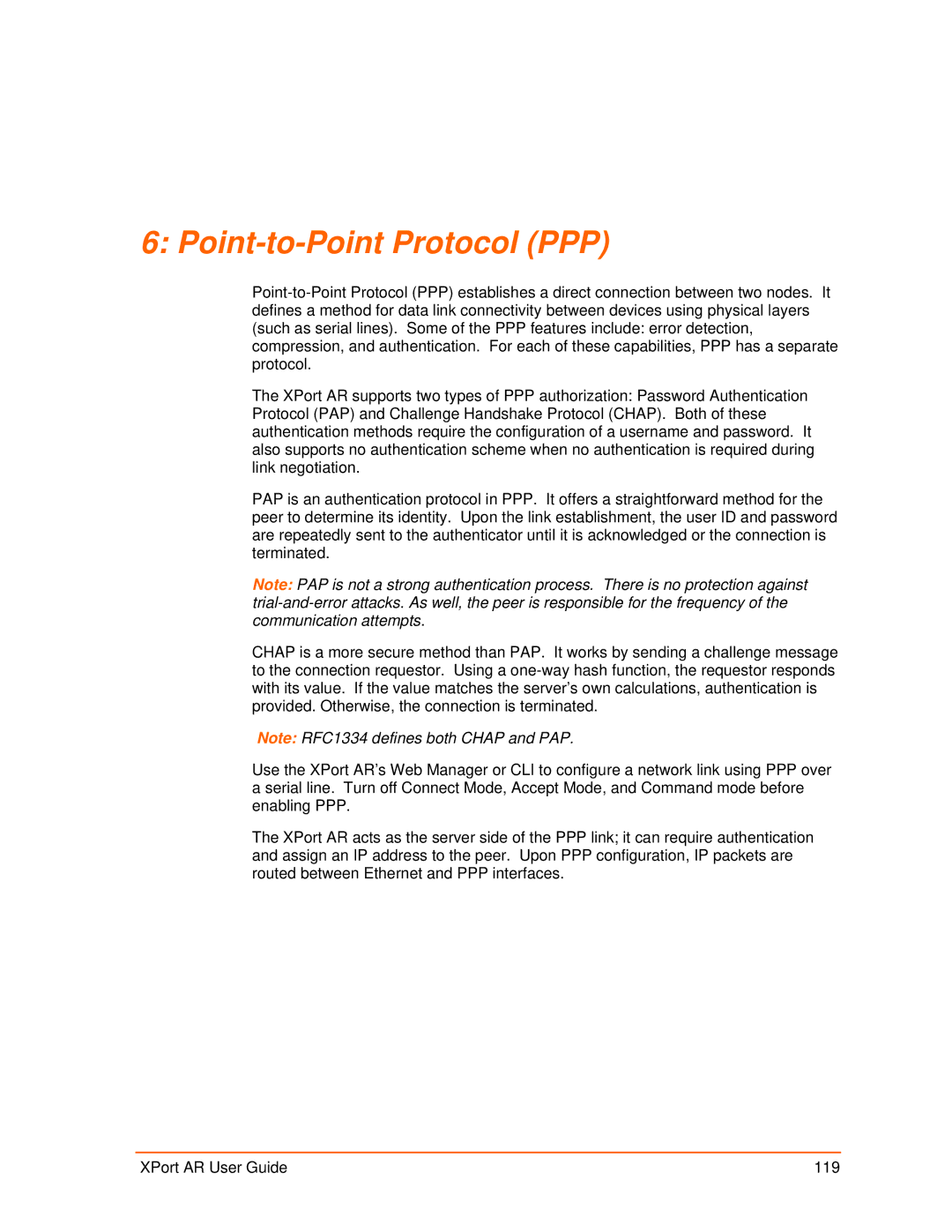6: Point-to-Point Protocol (PPP)
The XPort AR supports two types of PPP authorization: Password Authentication Protocol (PAP) and Challenge Handshake Protocol (CHAP). Both of these authentication methods require the configuration of a username and password. It also supports no authentication scheme when no authentication is required during link negotiation.
PAP is an authentication protocol in PPP. It offers a straightforward method for the peer to determine its identity. Upon the link establishment, the user ID and password are repeatedly sent to the authenticator until it is acknowledged or the connection is terminated.
Note: PAP is not a strong authentication process. There is no protection against
CHAP is a more secure method than PAP. It works by sending a challenge message to the connection requestor. Using a
Note: RFC1334 defines both CHAP and PAP.
Use the XPort AR’s Web Manager or CLI to configure a network link using PPP over a serial line. Turn off Connect Mode, Accept Mode, and Command mode before enabling PPP.
The XPort AR acts as the server side of the PPP link; it can require authentication and assign an IP address to the peer. Upon PPP configuration, IP packets are routed between Ethernet and PPP interfaces.
XPort AR User Guide | 119 |
